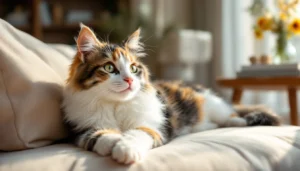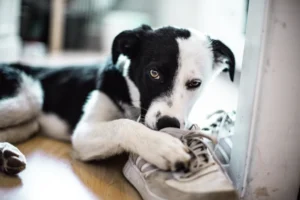Cats are known for their curious behavior, from playfully pawing at toys to lounging in sunbeams for hours on end. One common feline quirk that can leave pet owners puzzled is why cats chew on rubber items. Understanding this behavior can help ensure the safety of both your cat and your belongings.
Cats may chew on rubber items due to their texture and scent, as well as potential stress or dental issues.
Rubber Chewing Behavior in Cats
Cats have a natural inclination to chew on rubber items for a variety of reasons. One common reason is that rubber materials mimic the texture of prey, such as small rodents or birds, which can trigger a cat’s hunting instincts. Additionally, rubber items may have a scent or taste that appeals to cats, leading them to chew on these objects.
Another reason cats chew on rubber could be due to boredom or stress. Chewing on rubber items can provide a form of mental stimulation or comfort for cats, especially in environments where they may not have enough opportunities to engage in natural behaviors like hunting or playing.
If you notice your cat exhibiting this behavior, it’s essential to provide them with appropriate toys and activities to redirect their chewing habits. Offering interactive toys, puzzle feeders, or engaging with your cat through play can help satisfy their need to chew and prevent them from targeting rubber items in your home.
Remember, it’s crucial to monitor your cat’s chewing behavior and provide them with safe alternatives to satisfy their natural instincts.
Risks of Rubber Ingestion
While chewing on rubber items may seem harmless, it can pose significant risks to your cat’s health. Rubber materials can be challenging for cats to digest, leading to blockages in their digestive system. This can result in serious health consequences such as vomiting, diarrhea, or even surgical emergencies.
Ingesting rubber items can also be a choking hazard for cats, especially if they bite off and swallow small pieces of rubber. These pieces can become lodged in their throat or gastrointestinal tract, causing breathing difficulties or obstructions.
To prevent these risks, it’s crucial to keep rubber items out of your cat’s reach and provide them with safe, durable toys to chew on. If you suspect that your cat has ingested rubber or is experiencing any symptoms of distress, such as vomiting or lethargy, contact your veterinarian immediately for guidance.
Remember, a proactive approach to managing your cat’s chewing behavior can help keep them safe and healthy.
How to Prevent Rubber Chewing
Is your feline friend getting a little too chomp-happy with rubber items? Don’t worry, there are ways to redirect this behavior! Firstly, try providing your cat with appropriate chew toys to satisfy their natural chewing instincts. Look for toys specifically designed for cats, such as rubber balls or chew sticks. Additionally, consider using deterrent sprays on rubber items to make them less appealing. These sprays have safe, bitter tastes that deter cats from chewing. Lastly, ensure your cat has plenty of mental and physical stimulation to prevent boredom, which can contribute to excessive chewing behavior. By implementing these strategies, you can help curb your cat’s rubber-chewing habit and keep your belongings safe and sound.
Safe Alternatives for Cats to Chew On
When it comes to providing safe alternatives for cats to chew on, it’s essential to choose options that are specifically designed for feline friends. Look for chew toys made from materials like rubber, fleece, or sisal that are safe for your cat to munch on. Some great options include rubber chew balls, interactive puzzle toys, and dental chews that can help keep your cat’s teeth healthy. Remember, not all chew toys are created equal, so be sure to supervise your cat while they’re chewing to prevent any accidents. By offering your cat safe and engaging chew toys, you can redirect their chewing behavior and keep them entertained for hours on end.
Safe Alternatives for Cats to Chew On: 1. Rubber chew balls 2. Interactive puzzle toys 3. Dental chews 4. Fleece toys 5. Sisal scratching posts
For more information on safe chew toys for cats, check out this comprehensive guide from the American Society for the Prevention of Cruelty to Animals (ASPCA): ASPCA Chew Toy Guide
The Role of Stress in Chewing Behavior
Have you ever noticed your cat chewing on rubber items when they seem anxious or stressed? Stress can be a significant factor in a cat’s chewing behavior. Cats may chew on rubber objects as a way to alleviate stress or anxiety. Just like humans may bite their nails or chew on pens when feeling nervous, cats may turn to chewing on rubber as a coping mechanism. Providing your cat with a calming environment and plenty of enrichment activities can help reduce their stress levels and decrease their desire to chew on rubber items.
Dental Health and Chewing
When it comes to why cats chew on rubber, dental health plays a crucial role. Cats, like humans, may chew on rubber items to help alleviate dental discomfort or pain. Chewing on rubber can provide a sense of relief for cats experiencing dental issues, such as gum inflammation or tooth pain. Ensuring your cat receives regular dental check-ups and maintaining their oral hygiene can help prevent dental problems that may lead to rubber-chewing behavior.
Additional Tip: If you notice your cat excessively chewing on rubber items, it’s essential to consult with your veterinarian to rule out any underlying dental issues that may be causing discomfort. Taking care of your cat’s dental health can contribute to reducing their rubber-chewing behavior.
For more information on feline dental care, you can refer to the American Association of Feline Practitioners’ guidelines on dental health for cats: AAFP Dental Care Guidelines
Understanding your Cat’s Needs
Have you ever wondered why your cat has a fascination with chewing on rubber items? Well, understanding your furry friend’s needs and behaviors is key to addressing this quirky habit effectively. Cats may chew on rubber due to teething, seeking attention, or even exploring new textures. It’s essential to observe your cat’s behavior closely to determine the root cause of their rubber-chewing tendencies. By being attuned to your cat’s individual needs, you can better cater to their preferences and provide a safe environment.
Engaging Toys and Activities
In addition to understanding your cat’s needs, providing engaging toys and activities can help curb their rubber-chewing behavior. Offer a variety of interactive toys, such as puzzle feeders or feather wands, to keep your cat mentally stimulated and occupied. Consider incorporating scratching posts or cat trees to redirect their chewing impulses onto appropriate surfaces. By enriching your cat’s environment with engaging toys and activities, you can help prevent boredom and reduce the likelihood of them turning to rubber items for entertainment.
Recommended Toys:
- Interactive Treat Balls: Stimulate your cat’s hunting instincts and keep them engaged.
- Catnip-filled Toys: Provide a natural attractant to encourage play and prevent chewing on rubber.
- Dangling Feather Wand: Promote physical activity and mental stimulation through interactive play sessions.
By offering a stimulating environment and addressing your cat’s unique needs, you can help discourage them from chewing on rubber items while fostering a rewarding bond with your feline companion.
Alex, a passionate animal lover, has experience in training and understanding animal behavior. As a proud pet parent to two dogs and three cats, he founded AnimalReport.net to share insights from animal experts and expand his knowledge of the animal kingdom.




